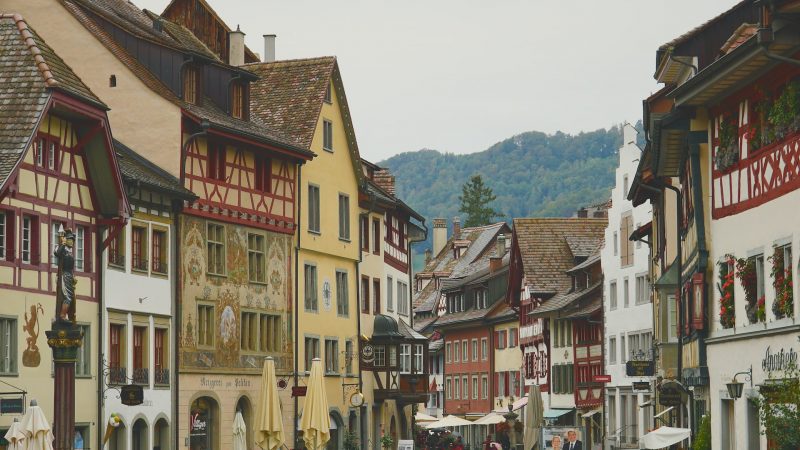The German language is spoken by over 100 million people in countries all over the world. But did you know that there are different dialects of German, spoken in different regions? In this guide, we’ll take a look at some of the most common German dialects and how they differ from standard German.
If you’re planning to visit or move to Germany, it’s important to be aware of the different German dialects so you can be sure to communicate effectively with those around you. With this guide, you’ll have a better understanding of the various German dialects and be able to navigate the language barrier with ease.
The Different German Dialects
The German language is spoken by more than 100 million people in over 30 countries. It is the official language of Germany, Austria, Switzerland, and Liechtenstein, and one of the four official languages of Belgium. German is also a minority language in many other countries, including Denmark, Hungary, Italy, the Czech Republic, and Slovakia.
Because of its wide geographical distribution, German has several different dialects. These can be broadly grouped into three main categories: Low German, Middle German, and High German.
Low German is spoken in northern Germany, as well as in the Netherlands, Denmark, and parts of Poland. It is also known as Plattdeutsch or Nedderdütsch. Middle German is spoken in central Germany, as well as in Austria, Switzerland, and Liechtenstein. High German is spoken in southern Germany, as well as in parts of Austria, Switzerland, Luxembourg, Italy, and Denmark.
There are also several different Germanic languages spoken in other parts of Europe, including Dutch, Afrikaans, Frisian, and Yiddish. German is closely related to these languages, as well as to English.
A Comprehensive Guide to Understanding German Dialects
When it comes to German dialects, there is a lot to wrap your head around. But don’t worry, we’re here to help! This comprehensive guide will cover everything you need to know about German dialects, from the basics of what they are to the more intricate details of how they differ from one another.
So, what exactly are German dialects? In short, they are different varieties of the German language that are spoken in different regions of Germany. Depending on where you are in the country, you will likely encounter a different dialect certified german translation services.
Now that we’ve got the basics out of the way, let’s take a closer look at how German dialects differ from one another. The most noticeable difference is in the way that words are pronounced. This can be quite tricky for non-native speakers to get used to, but with a little practice, it’ll become second nature.
One of the major differences between German dialects is the use of certain words and phrases. In some cases, words may have different meanings depending on the dialect you’re using. It’s important to be aware of these differences so that you can communicate effectively with people from all over Germany.
Finally, German dialects can also differ in terms of grammar. While the rules of standard German are fairly uniform, there are some slight variations between dialects. Again, it’s important to be aware of these differences so that you can communicate clearly and avoid any misunderstandings.
The Various Characteristics of German Dialects
German is a pluricentric language, with many different dialects. These dialects can be classified by their regional origin, their social status, or their function.
The regional origin of German dialects is perhaps the most obvious way to classify them. Dialects can be broadly grouped into those from Northern Germany, Central Germany, and Southern Germany. Each of these regions has its distinct characteristics.
Northern German dialects are typically the most conservative, retaining many features of Old High German. They are also generally the most difficult for non-native speakers to understand. Central German dialects are considered to be in between Northern and Southern German in terms of their conservatism. They are also more uniform than the other two groups, as they are less influenced by regional variation. Southern German dialects are the most innovative and have undergone the most change from Old High German. They are also generally considered to be the easiest for non-native speakers to understand.
German dialects can also be classified by their social status. High German dialects are those that are used by the upper class and those in positions of power. Low German dialects, on the other hand, are typically spoken by the lower class. These dialects often have a more simplified grammar and vocabulary.
Finally, German dialects can be classified by their function. For example, some dialects are used for everyday conversation, and dialects are used for more formal situations. Some dialects are used specifically in the media, such as television and radio. Each of these functions has its own set of characteristics.
In general, German dialects are very diverse. They can differ greatly in terms of their pronunciation, grammar, and vocabulary. This makes them interesting and unique to study.
Conclusion
Despite these differences, the German language is a beautiful and harmonious language that is rich in history and culture. By learning about the different German dialects, you can better appreciate the diversity of this wonderful language.




